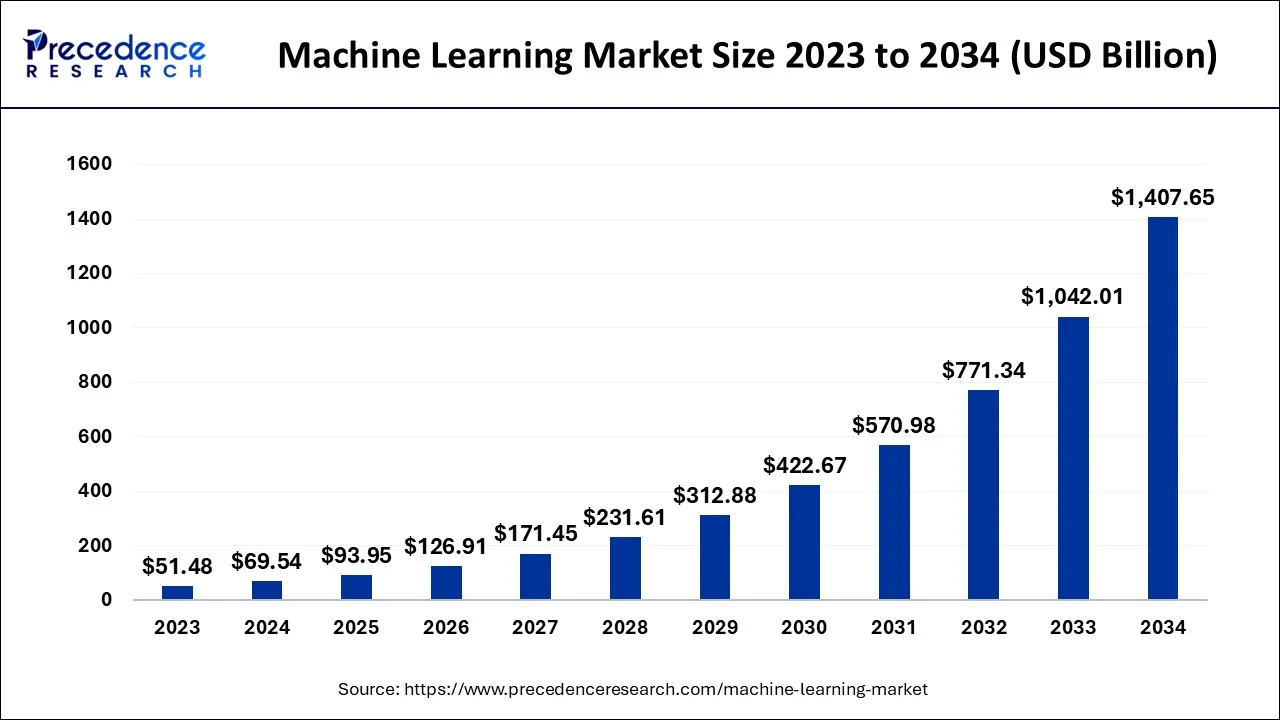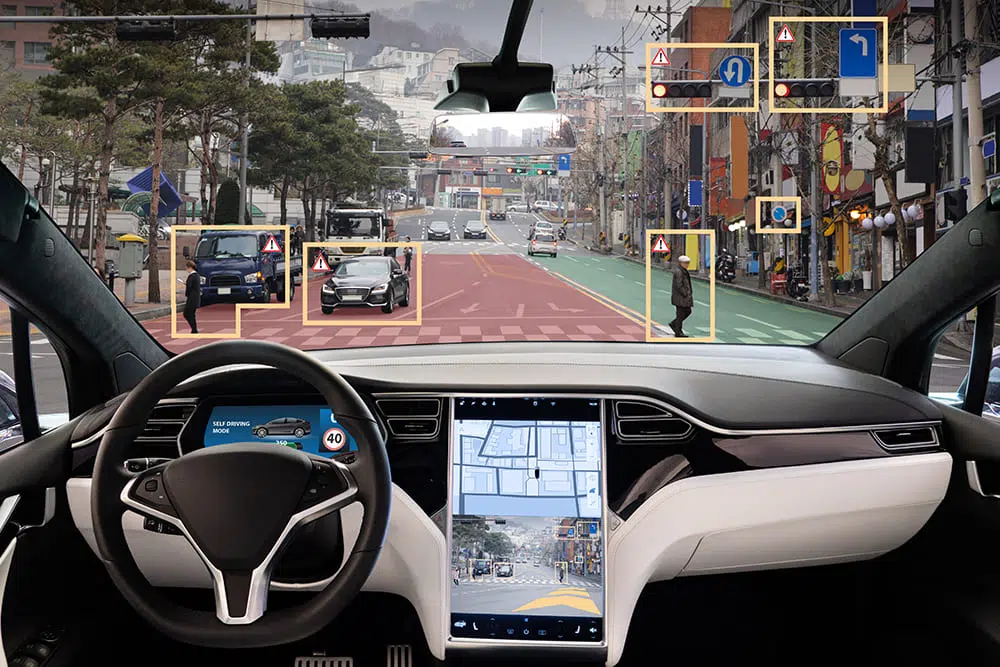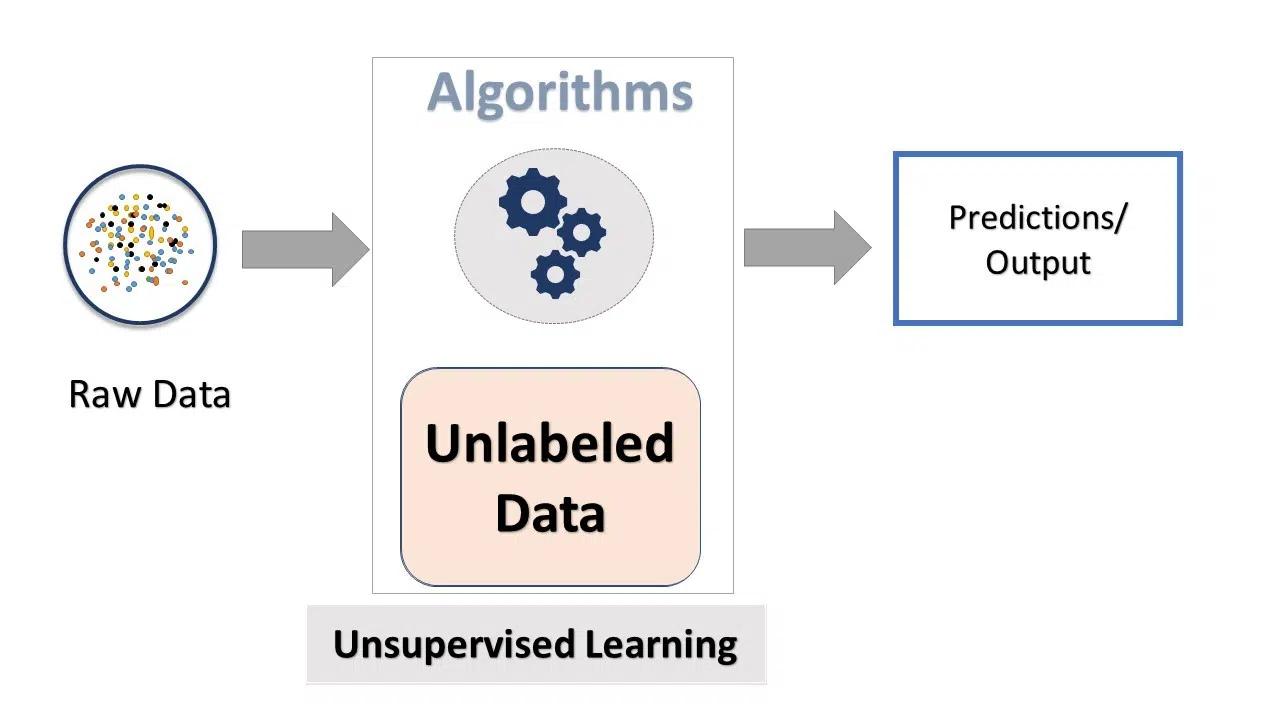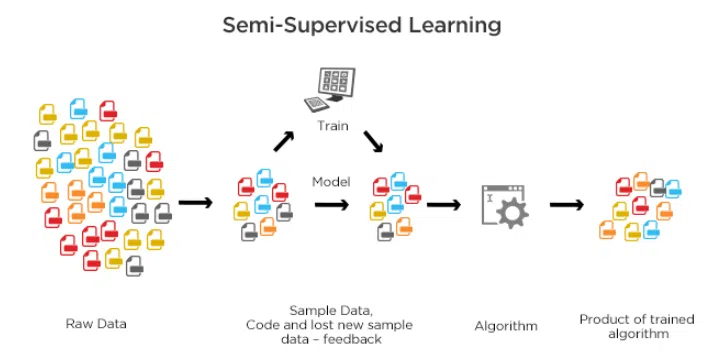What Is Machine Learning Development And How To Develop? A Step-by-Step Guide [2025]
Machine learning (ML) is a part of artificial intelligence (AI) and computer science. Its main aim is to make AI systems learn from data and algorithms, mimicking human learning and enhancing accuracy over time.
In 2022, the global machine learning market size was around USD 38.11 billion, as estimated by Precedence research. It’s expected to grow substantially, reaching approximately USD 771.38 billion by 2032. This growth is anticipated at a compound annual growth rate (CAGR) of 35.09% from 2023 to 2032.

Image source: Precedence Research
For newcomers struggling to find guidance or analytics in optimizing AI, our article “What Is Machine Learning Development And How To Develop?” can be a valuable resource. It provides insights to help you understand and navigate the field of machine learning development effectively.
What Is Machine Learning Development?
Machine learning development, a crucial facet of artificial intelligence, revolves around crafting algorithms and statistical models that empower computers to perform tasks autonomously. Instead of explicit instructions, these systems learn from data, discerning patterns to make predictions or decisions. This blend of computer science and statistics is pivotal, positioning machine learning as a cornerstone of AI.
Within the realm of machine learning (ML), a diverse array of techniques enables software applications to improve progressively. ML algorithms excel at uncovering relationships in data, using past input to predict outcomes, categorize information, group data points, and even aid in content creation. This capability is evident in cutting-edge advances in deep learning applications like ChatGPT, and Copilot, driven by advances in deep learning.
Machine learning development finds application across various industries, fueling recommendation engines in e-commerce and assisting navigation in self-driving cars like Tesla’s car. In healthcare, it contributes to diagnostics and treatment planning. Additionally, ML plays roles in fraud detection, spam filtering, threat identification, predictive maintenance, and business process automation.

ChatGPT is widely recognized as one of the most comprehensive machine learning models
Despite its potential, machine learning development demands a solid grasp of mathematics and statistics. Training ML algorithms necessitates ample, high-quality data to yield accurate results. The outputs, particularly from intricate models like deep neural networks, can pose challenges in interpretation. Moreover, deploying and fine-tuning ML models can be resource-intensive.
Nonetheless, the integration of ML into IT and business strategies is increasingly common, as organizations leverage it to streamline processes, forecast trends, and mitigate risks. As machine learning evolves, it holds the promise of further revolutionizing problem-solving and task automation across diverse sectors.
Types Of Machine Learning Development
Below we will introduce to you the 3 most popular machine learning developments currently available.
Supervised machine learning
Machine learning development involves using different techniques to teach models how to perform tasks without direct programming. One important method is supervised learning. In supervised learning, we train a model using labeled data. Each training sample includes input data along with its matching output labels. By doing this, the model learns how to make predictions or decisions based on the examples it’s given. This process is crucial in machine learning development because it allows systems to apply what they’ve learned from known examples to accurately predict outcomes for new, unseen data.
How does Supervised machine learning work?

Image source: VinBigdata
The process is straightforward: the model makes predictions based on these examples and adjusts itself to get more accurate over time. It’s like a student learning from a teacher’s feedback – the algorithm compares its predictions to the actual outcomes and refines itself accordingly. This cycle repeats until the model’s predictions match closely with what’s expected, reaching a satisfactory level of accuracy.
Supervised learning is quite flexible and can handle various tasks such as:
- Binary Classification: Sorting data into two categories.
- Multiclass Classification: Selecting from multiple categories.
- Ensembling: Combining multiple models for better predictions.
- Regression Modeling: Predicting continuous values.
Unsupervised machine learning
Unsupervised machine learning is a kind of algorithm that digs into data without any pre-existing labeled responses. It independently finds hidden patterns and complex relationships within the data set. This self-guided process helps the model to spot natural groupings, anomalies, or underlying structures without needing any prior information or specific training signals. As a result, it can extract valuable insights from unorganized data.
How does Unsupervised machine learning work?

Image source: Edushots
Unsupervised machine learning works by delving into the structure of data to uncover insights on its own. It detects groups of similar data points, showing patterns and behaviors without predefined labels or goals. This independent analysis enables the model to do tasks like clustering, which sorts data into groups based on similarities, anomaly detection, pinpointing outliers that don’t fit the usual pattern, association rule mining, discovering items that often appear together, and dimensionality reduction, which simplifies the dataset by reducing its variables. These abilities make unsupervised learning a valuable tool for comprehending data more profoundly.
Semi-Supervised machine learning
Semi-supervised machine learning blends supervised and unsupervised learning techniques, offering a balanced approach. It uses both labeled and unlabeled data to improve learning accuracy while reducing the expense and effort of fully labeled datasets. This method is especially useful when labeling data is costly or impractical, providing a cost-effective solution without sacrificing learning quality.
How does Semi-Supervised machine learning work?

Image source: primo.ai
Semi-Supervised Machine Learning is a technique that mixes both labeled and unlabeled data to train algorithms about the complexities of a dataset. Here’s how it works:
First, a small set of labeled data is used to teach the algorithm about the characteristics and patterns present in the dataset. This initial learning phase gives the algorithm a solid foundation to build upon.
Then, this learned knowledge is extended to a larger pool of unlabeled data. By leveraging what it has already understood from the labeled data, the algorithm can make educated guesses and predictions about the unlabeled data, improving its performance without the need for extensive labeling.
This approach is highly beneficial in various domains. For instance, in machine translation, it helps in translating languages even with limited dictionaries. In fraud detection, it enables the identification of rare instances of fraud amidst vast amounts of unlabeled data. Moreover, in data labeling tasks, it streamlines the process by efficiently scaling from smaller to larger datasets.
How To Choose And Develop The Right Machine Learning Model
Choosing the right AI in learning and development model is a big deal, and it all kicks off with selecting the right algorithm. Once that’s sorted, it’s all about training the model with good data so it can pick up on patterns. The development team plays a key role here, tweaking the model to perfection by adjusting hyperparameters until it hits the mark.
Testing and validation are super important steps to ensure the model can handle new data without any hiccups. Nobody wants a model that’s too stuck in its ways, right? Then comes deployment, where the rubber meets the road. You’ve got to make sure the model can handle the big leagues, dealing with a ton of data and keeping up in real-time. Below are the comprehensive 5 steps in choosing and developing machine learning.
Planning
Before diving into model development, a thorough planning phase is essential. Evaluate the scope, success metrics, and feasibility of the machine learning application. Consider whether machine learning is the optimal solution and establish clear success criteria .
Data preparation
Prepare the data meticulously by acquiring, labeling, cleaning, and managing it. Allocate resources for data gathering and labeling, then clean and preprocess the data, including feature engineering and normalization.
Model engineering
Craft the model by selecting appropriate algorithms, defining metrics, and conducting thorough experimentation. Involve domain experts for interpretation and ensure reproducibility by versioning key components.
Model evaluation
Evaluate the model’s performance rigorously, involving subject matter experts and ensuring adherence to legal and ethical frameworks. Test resilience with diverse datasets and compare outcomes against success indicators.
Model deployment
Deploy the model strategically, considering various platforms and ensuring a seamless user experience. Develop a comprehensive deployment plan and catastrophe management strategy for ongoing observation and maintenance.
Looking For a Dedicated Team?
Looking to revolutionize your business with cutting-edge Machine Learning solutions? Your search ends here with Savvycom. With over 15 years of expertise in the field, Savvycom offers unparalleled software development consulting services to meet your business’s specific needs in Machine Learning. Our team of experts will work closely with you to develop tailored solutions that optimize your operations, drive innovation, and propel your business to new heights. Partner with us to unlock the full potential of Machine Learning for your enterprise!
Benefits Of Machine Learning
Machine learning offers a myriad of advantages, fundamentally altering our approach to data analysis and decision-making. Here’s a breakdown of its key benefits:
- Tailored Solutions: Different machine learning algorithms cater to specific project needs. For example, supervised learning crafts predictive models from labeled data, while unsupervised learning uncovers hidden patterns in unlabeled data.
- Swift Data Analysis: Machine learning swiftly sifts through vast datasets, pinpointing intricate patterns and trends that might elude human eyes. This leads to valuable insights at a faster pace.
- Less Manual Work: Once set up, machine learning systems demand minimal human intervention. They autonomously refine themselves over time with more data, enhancing accuracy and efficiency.
- Personalized Touch: Machine learning models continuously learn and adapt, enabling personalized experiences for customers and users. This boosts satisfaction and loyalty by tailoring services to individual preferences and behaviors.
These advantages collectively foster more effective, informed, and data-centric decision-making across diverse sectors.
Machine Learning Applications For Enterprises
- Business analytics: Machine Learning (ML) empowers businesses to sift through vast troves of data, uncovering nuggets of insight crucial for smart decision-making. By spotting patterns and trends, ML aids in charting strategic courses and supercharges operational prowess, helping companies stay ahead in the game.
- CRM (Customer Relationship Management): ML revolutionizes how businesses engage with customers by foreseeing behaviors, customizing interactions, and fine-tuning marketing maneuvers. By segmenting customers and offering tailored solutions, companies can foster stronger connections, ultimately boosting their bottom line.
- Security protocols and regulatory adherence: ML beefs up security measures by pinpointing irregularities and keeping tabs on transactions to ensure adherence to regulations. Armed with cutting-edge algorithms, companies can shield sensitive data and fend off cyber threats more effectively.
- HRIS (Human Resource Information Systems): ML streamlines the complexities of talent scouting, performance assessments, and retaining top talent. By scrutinizing candidate profiles and predicting job fit, businesses can streamline recruitment processes and cultivate a more engaged workforce.
- Managing the flow of goods and services: In the realm of supply chain logistics, ML revolutionizes inventory handling, predicts demand, and fine-tunes logistical maneuvers. By automating processes and proactively tackling disruptions, enterprises can boost efficiency and trim expenses.
- Language processing technology: ML acts as a bridge for seamless communication across languages, facilitating smooth global operations. With the aid of natural language processing tools, businesses can effectively connect with diverse audiences and broaden their market horizons.
Vietnam: An Emerging Market in Machine Learning Development Services
Vietnam stands out as a premier hub for outsourcing software development companies, particularly for AI-related services. This Southeast Asian nation offers a blend of advantages that entice businesses globally.
Firstly, Vietnam boasts a sizable cohort of highly proficient engineers and software developer’s adept in AI technology. Thanks to its education system’s emphasis on Science, Technology, Engineering, and Mathematics (STEM), Vietnam nurtures a talent pool brimming with robust technical skills.
Among the notable players in Vietnam’s software development company is Savvycom. With over 15 years of expertise, Savvycom specializes in seed product development, information technology, and AI processing. Renowned for its reliability, Savvycom serves as a trusted partner for diverse business models, spanning from small and medium-sized enterprises to large corporations, both domestically and internationally. In the realm of machine learning development, Savvycom consistently leads the pack, setting itself apart from its competitors.
Savvycom’s expertise extends beyond conventional software solutions, delving deep into the complexities of AI vs Machine Learning vs Deep Learning to deliver cutting-edge innovations. By leveraging advanced algorithms and data-driven insights, Savvycom pioneers breakthroughs in various industries, particularly machine learning in healthcare. From predictive analytics that enhance patient diagnostics to AI-powered automation streamlining hospital operations, Savvycom empowers healthcare providers with intelligent solutions that improve efficiency and patient outcomes. With a commitment to technological excellence, Savvycom continues to shape the future of AI-driven applications across multiple sectors.
Conclusion
Machine learning is changing the game across industries, automating tasks and improving decision-making. This not only makes operations more efficient but also sparks innovation, becoming a crucial asset in today’s digital era. Deciding if machine learning models and features suit your requirements is key. We trust our article “What is Machine Learning and How to develop?” addressed all your queries.
Savvycom – Your Trusted Tech Partner!
Transform your manufacturing processes with revolutionary Machine Learning solutions from Savvycom, the leading IT outsourcing provider in Asia, driving digital transformation since 2009. With our extensive expertise, we specialize in crafting advanced IoT solutions tailored precisely to your manufacturing needs. From optimizing production lines to enhancing equipment efficiency and enabling real-time data analytics, we deliver comprehensive solutions to propel manufacturing into the future. Partner with us to unlock the full potential of IoT technology and lead innovation in your industry. Join the manufacturing revolution today! Collaborate with Savvycom, Asia’s premier IT consulting service, and revolutionize your industry with cutting-edge IoT solutions. Let’s ignite innovation together!
Savvycom is right where you need. Contact us now for further consultation:
- Phone: +84 24 3202 9222
- Hotline: +84 352 287 866 (VN)
- Email: [email protected]


